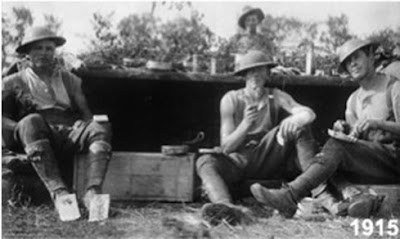Food was transported across the sea at a maximum speed of ten knots, or 18.5 kph, by ships of the Merchant Navy.
The
majority of these ships did not contain refrigerated facilities, so any
food that was sent had to remain edible for at least two months.
That is when the Anzac Biscuit was invented.
Based
on the Scottish recipe using rolled oats, sugar, plain flour, coconut,
butter, golden syrup, bi-carbonate of soda and boiling water.
All these items did not readily spoil and were easily maintained.
Some soldiers also used crushed biscuits to make porridge.
A
point of interest was the lack of eggs used to bind the Anzac Biscuit
mixture together. This is largely due to poultry farmers joining the
services in the war, thus the eggs were scarce.
Eggs,
that were sent long distances, were coated with a product similar to
Vaseline and then packed into air tight containers and filled with sand.
At
first the biscuits were called ‘Soldiers biscuits’ but after the
landing on Gallipoli in 1915 they were dubbed Anzac biscuits.
As
the war carried on many groups like the Country Women’s Association,
churches, schools and other women’s committees would devote a great deal
of time to making Anzac biscuits.
When
World War II came, refrigeration was installed in many Merchant Navy
Ships so the biscuits were not ideal to make. Other foods, such as fruit
cake, were sent to the soldiers.


No comments:
Post a Comment